
Create Better Establishing Shots with These Photography Techniques
Improve your establishing shots—and lure your audience into the mix—with a few principles of still photography.
We recently published an article titled The Filmmaker’s Guide to the Establishing Shot, which deconstructed one of the core shots in cinematography. However, due to its simplistic nature (as you can quite simply place the camera outside of the building you’re filming in), it can be easy to overlook the establishing shot’s creative potential.
With that, let’s look at some principles of photography to create better shots. After all, in most cases an establishing shot is essentially a cityscape photograph, a landscape photograph, and so on.
Lead-In Lines
Many visual components of print, film, and photography can direct the audience’s gaze to specific areas of the image—or lead them through the picture organically.
The Gutenberg Diagram dictates that print readers will usually read from top-left to right, diagonally across the center, and then finish on the bottom-right of the image.
You’ll find countless magazine covers and movie posters that adhere to the Gutenberg Diagram.
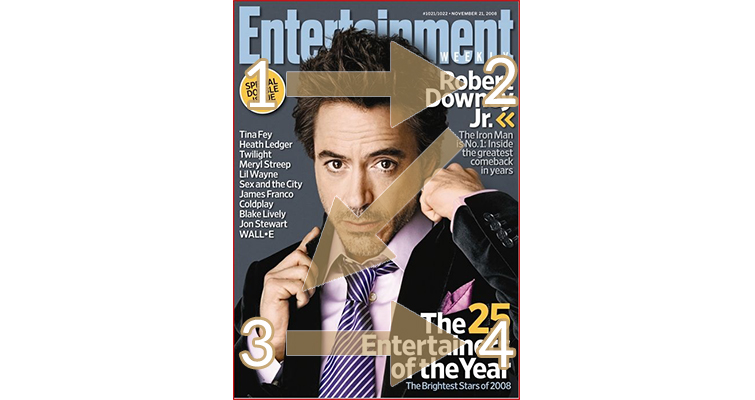
You can also direct the eye within an establishing shot using lead-in lines. In photography, a lead-in line is any line in the image that leads your gaze into and through the photograph.
It can be a road, the edge of a building, a contrail, even a spiral staircase—it doesn’t have to be a straight line. You can find lead-in lines in almost all compositional spaces, you just have to look for them.

In filmmaking, we can use a line to direct the audience’s attention throughout the entire image instead of just focusing on a specific aspect. We can add story elements, visual cues, and give the audience extra information about the story or plot—all within the establishing shot.
Take the following shot from The Assassination of Jesse James by the Coward Robert Crawford. By choosing to shoot from behind the path, the filmmakers give the audience an organic lead-in line to follow through the entire image until we reach our location.
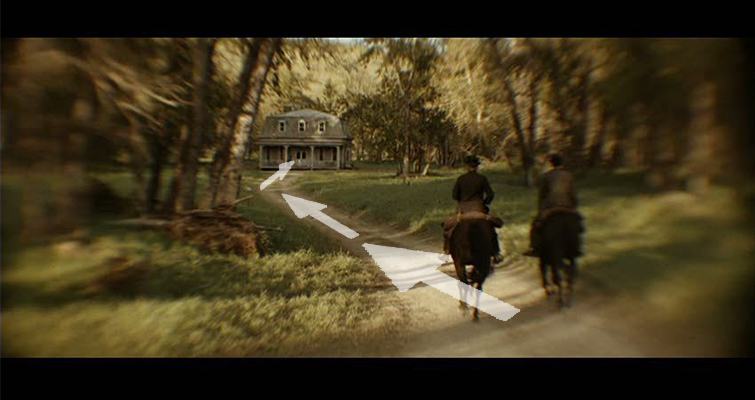
Talk about diagonal lines.
Foreground Interest

Foreground interest helps create layers of depth in your image. Since an establishing shot identifies a location, it’s normal to question the idea of featuring something in the foreground that will ultimately be the center of focus.
However, foreground interest doesn’t just pertain to a boat, fence, or any visible object. Foreground interest can also be the ground itself, tall grass, rocks, water, etc.
The establishing shot below is of Bear Island from Game of Thrones, home of fan-favorite Lady Lyanna Mormont. Since this is a digital matte painting, the VFX artists had creative leeway regarding what they wanted in the composition.
The result features the Bear Island manor prominently, and we see some of the island’s beauty. However, by adding foreground interest, we see a lot more emotion in the environment, which creates a sense of depth.
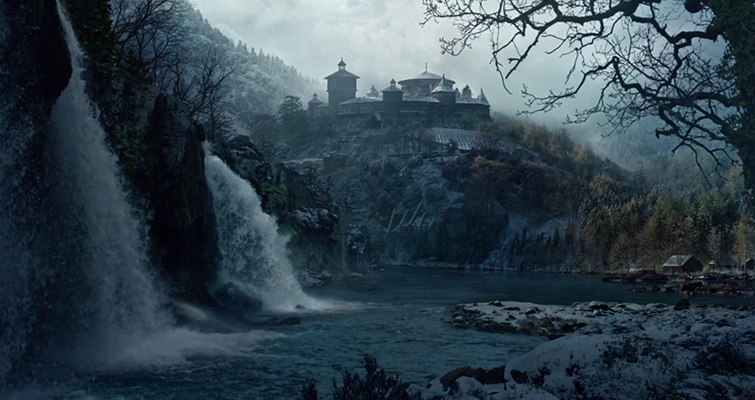
If this were an actual location, you’d have two possible shooting scenarios. Walk right up to the edge to get the best shot of the keep, or move further back and include some of the foreground to give the composition life.
As you can see, if we zoom in as if we were filming on the water’s edge, without the foreground interest, it doesn’t hold the same type of magic.
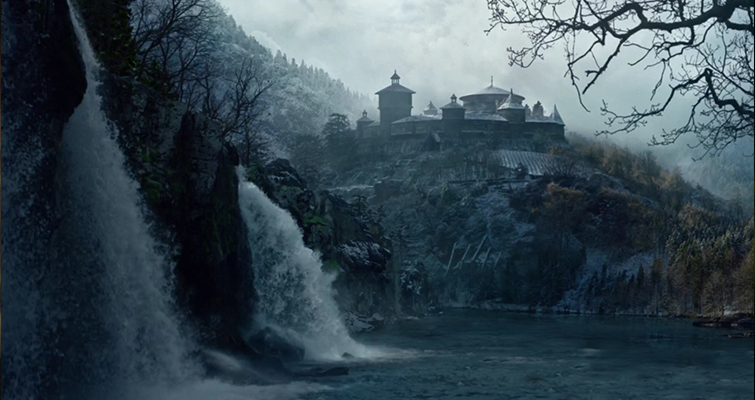
Natural Frames
A popular photography technique is finding and using natural enclosures to frame a landscape shot.

Applied correctly, this technique can add a sense of majestic beauty to an otherwise standard landscape. If you pay close enough attention to Steven Spielberg‘s films, you’ll see that he often uses people and objects within a scene to frame a major character or moment, as we see in Duel.

We can also use this technique in an establishing shot using foliage, bridges, gates, fences, or even clouds. It’s important to note that you don’t have to use objects to create a defined frame.
In fact, if we take another look at the still of Bear Island, we can see from the position of the foliage and the darkened areas towards the edge of the image that there’s a somewhat-natural vignette that locks your focus on the building in the center of the composition.
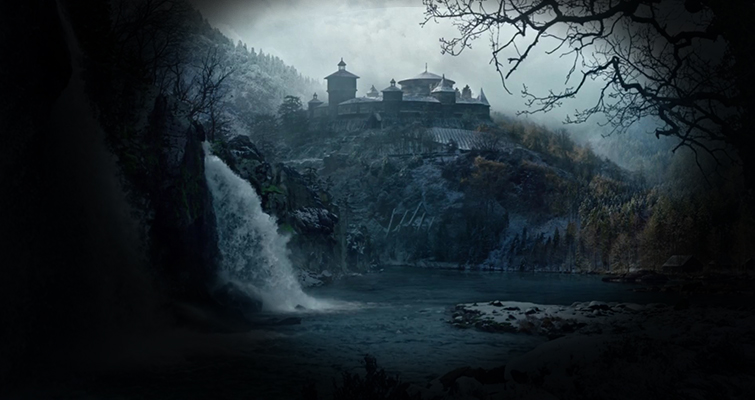
Conclusion
Establishing shots are usually a low priority on set. They generally fall to the second or third unit, and some filmmakers are doing away with them altogether.
I love a good establishing shot, it can set the tone for a scene. Using the tips and techniques discussed in this establishing shot article, you can now improve any project with more dynamic establishing shots.
For more composition tips, check out this video by Steve McCurry:
Need a few more cinematography tips? We’ve got you covered:
- Iconic Cinematography: Our 5 Favorite Shots from Bradford Young
- 5 YouTubers to Follow for Creative Cinematography
- Exploring the History and Revival of the 4:3 Ratio
- Filmmaking Trends: Why Shallow Focus Cinematography Is Here to Stay
- Iconic Cinematography: Our 5 Favorite Shots from Reed Morano
Cover image by Martinho Smart.





